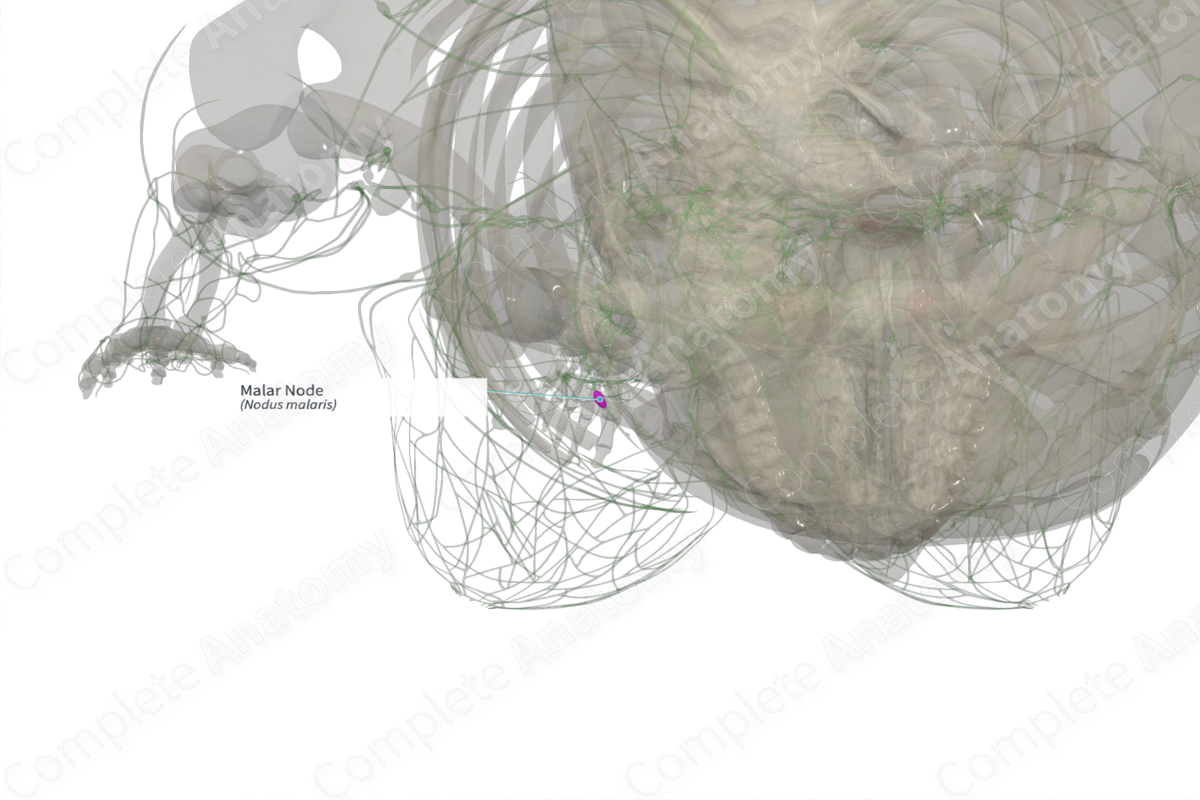
Quick Facts
Location: Superficial to the zygomatic process of the maxilla, intercalated on the lymphatic channels of the parotid.
Drainage: Skin over the eyelids and temporal region.
Direction of Flow: Parotid nodes > internal jugular nodes > supraclavicular nodes > jugular trunk > thoracic duct (left) or right lymphatic duct.
Related parts of the anatomy
Description
The malar nodes are the most consistent of the facial nodes and are found intercalated with the vertical lymphatic vessels associated with the parotid nodes, thus drainage these nodes in towards the parotid gland. From here, drainage occurs via the deep lateral cervical nodes and on to the jugular trunk and supraclavicular nodes (Bou-Assaly, 2016).
The drainage territory of these nodes is shared with a number of other nodes.
References
Bou-Assaly, W. (2016) 'The forgotten lymph nodes: Review of the superficial head and neck lymphatic system', Journal of Radiology and Imaging, 1(1), pp. 9-13.
Learn more about this topic from other Elsevier products
Lymph Node

Lymph nodes are a part of the lymphatic system, which also includes lymphatic vessels that collect interstitial fluid or lymph (including invaded microbes in case of infections) from all vascularized tissues and discharge it into their draining lymph nodes.




